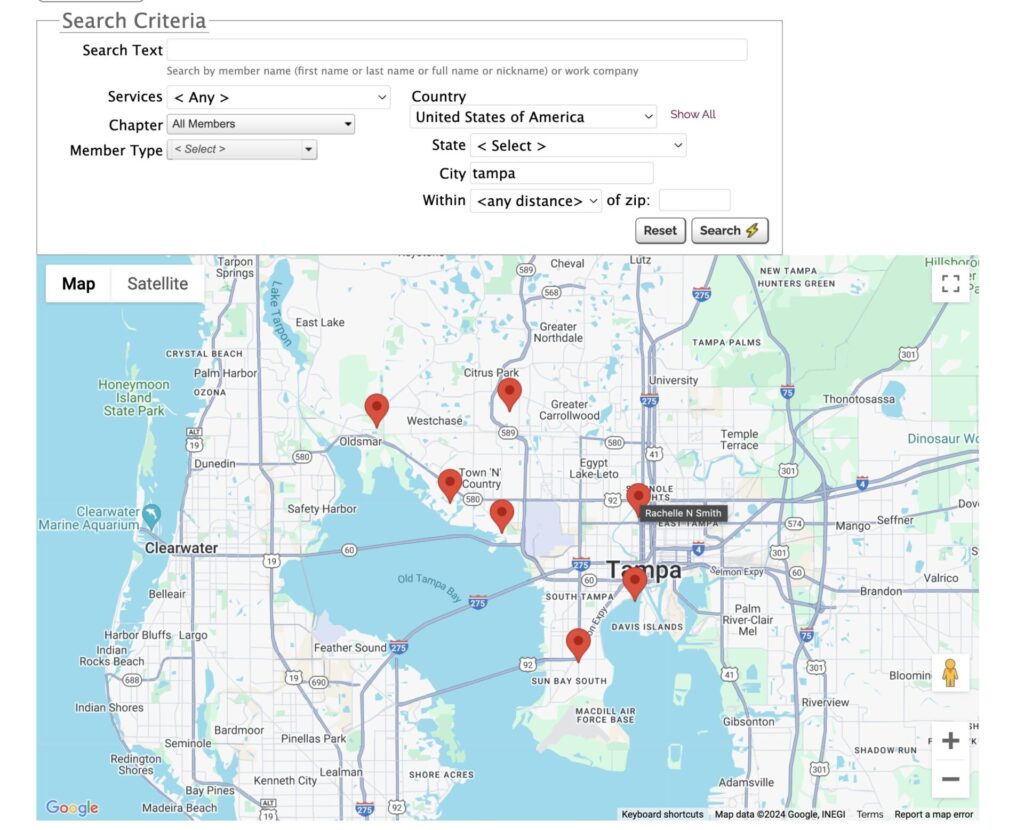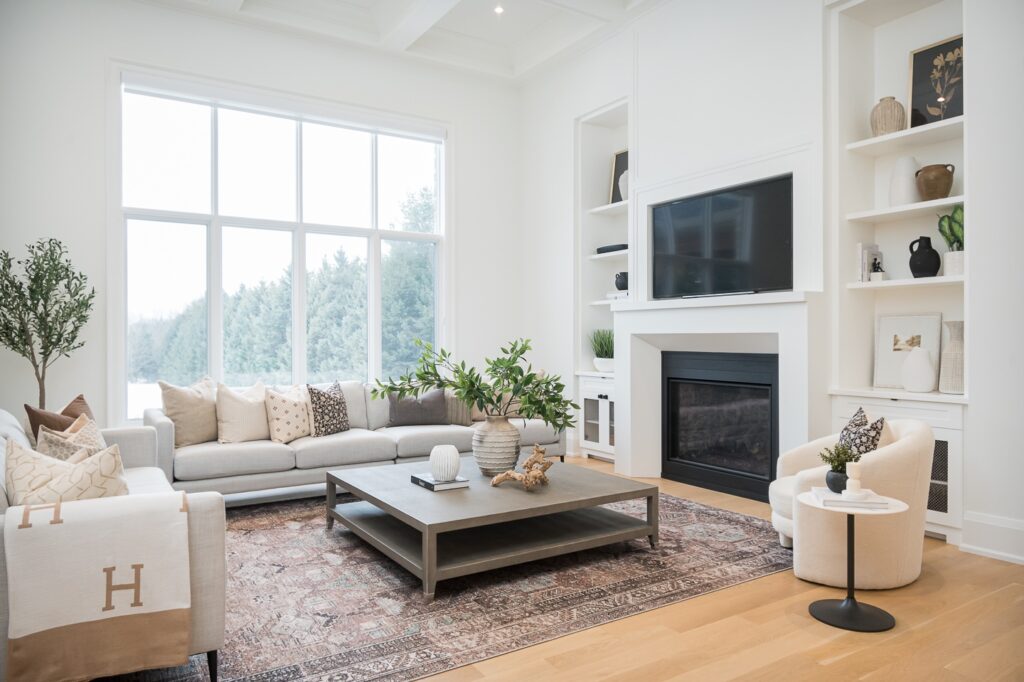Staged by 2024 Finalist in the RESA Home Staging Industry Awards, JT & Co. Interiors
Discover how home staging can significantly increase your listings’ sale price and reduce time on market.
Professional home staging comes at a cost. Unfortunately, many real estate agents don’t recognize this “cost” for the high-yield investment that it truly is. Although you’ll pay for furniture rentals, design expertise, and the set up and take down of all staging elements, you’ll get quicker turnovers, the ability to raise your asking prices, and more leverage at the negotiating table.
Hesitance to stage homes is especially common among newer agents. There’s real fear of spending money that might not generate worthwhile returns. After all, there are plenty of 3D virtual staging programs, “similar to” photos, and other low-cost resources available. However, professional staging consistently proves its worth when it comes to showing homes in the best possible light and quickly attracting motivated and qualified buyers. Low-cost staging alternatives do not.
The ROI on Home Staging: What the Latest Data Reveals
Although staging can feel like an unnecessary expense, statistics collected by the Real Estate Staging Association (RESA®) prove otherwise. According to data from the 2024 RESA® Survey:
- Staged homes spend an average of just 31 days on the market
- On average, professionally staged homes in the U.S. sell for $69,669 more than their listing prices
- On average, professionally staged homes in Canada sell for $155,502 more than their listing prices
In some instances, the returns on home staging can be more than 11 times profesionall staging’s cost. Thus, if you aren’t investing in home staging, you’re missing out and your clients are missing out, too.
The Regional Benefits of Home Staging
In the United States, regional differences in staging costs are matched by staggering returns. For instance, in the midwest where the median staging fee is $4,950, staged homes can sell as much as $18,750 over their asking prices. In the west where the median staging fee is $8,000, staged homes can sell for up to $125k more than their listed prices. In the south, the average price of home staging is just $4,600, but sellers could see sales price increases of up to $50k. When you compare the returns provided by staging across all U.S. regions, the upfront costs of hiring a professional home stager are actually quite nominal.
Staged by 2024 Finalist in the RESA Home Staging Industry Awards.Impressive Staging Inc
Why Staging Works: The Psychology Behind the Sale
Staging provides many practical and important benefits. It:
- Establishes a framework for accurately judging size
- Downplays less appealing property features
- Showcases building and room-specific assets
- Allows for realistic and trustworthy virtual tours and listing photos
However, staging also provides a number of important psychological advantages. With staging, you can make prospective buyers feel connected to the homes they’re viewing. Establishing strong emotional or visceral connections via staging often incites buyer urgency and action. Staging can make a house fell like a home. More importantly, staging can make someone else’s house feel like a prospetive buyer’s home.
Help Buyers Imagine Themselves Living in a Home
For sellers, the first step in preparing a listing is depersonalizing living spaces. Many homeowners stop short of repainting their walls, changing out lighting fixtures, and replacing outdated, worn, or ultra-trendy flooring. However, cleaning out knick-knacks and packing personal items into boxes isn’t staging. In most instances, it isn’t even effective depersonalization.
It’s hard for buyers to imagine themselves living in homes with unique wall colors, wall art, and furnishings. Keeping a home as-is for listing photos fails to account for the fact that home shoppers have their own preferences, lifestyles, and needs. Staging cleans, effectively depersonalizes, and recreates living environments in a fresh, yet neutral way. It incorporates design elements that draw the eyes in while simultaneously supplying near-blank canvases that prospects can paint themselves with just a touch of their imaginations.
Make Positive First Impressions, Every Time
Unstaged homes and homes that are poorly staged don’t make the best possible first impressions. This is just as true when they’re viewed in-person as it is when listings are first encountered in online photos and virtual tours. When positive first impressions aren’t made, buyers take action “in spite of” perceived shortcomings and not because they’re eager and excited to live in what they’ve seen. First impressions that make buyers reticent or hesitant to submit offers consistently result in lower numbers. With staging, you can make your listings buyers’ first choice rather than options that they might be willing to circle back to.

Staged by 2024 Finalist in the RESA Home Staging Industry Awards, Everly Home Staging
Staged Homes Are Perceived as Being Better-Maintained
Professionally staged homes have a pristine and perfectly polished look that attributes to a sense of newness. When purchasing pre-existing construction, buyers are leery of investing in someone else’s problems and the lingering effects of negligent maintenance. By giving homes a fresh and inviting appearance, staging convinces buyers that properties have always been well-maintained and that they’re completely move-in ready. This justifies higher offers. It also gives you more power when negotiating.
Overcoming Common Objections to Staging
Agents who’ve experienced the real returns of professional home staging swear by it. Those who have not continue to cite the extra spending and time that it requires. However, with returns that are 11 times that of the initial investment or higher and the average sales time of staged homes holding steady at 31 days in most markets, these objections don’t ring true.
Staging proves its worth in ALL market conditions. According to the National Association of REALTORS® (NAR), staging matters even in a sellers’ market. As per NAR, staging increases perceived value and garners maximum interest via online photos and other virtual, visual listing tools.
Turning Average Listings Into Head-Turners
A common challenge for many real estate agents is selling homes in developments with row upon row of cookie-cutter style buildings. With two to four nearly identical floor plans and multiple homeowners selling at once, it can be hard to get a new listing to garner much attention. When there are lots of identical-seeming, comparable homes in the community, aggressive staging can be the key to making a listing stand out.
Actionable Tips for Agents
Sellers will likely ask how much staging will cost and why it’s worth it. Be prepared to answer these questions by sharing data from both RESA® and NAR®, and by collecting quotes from professional home stagers. Don’t make estimaes about staging costs. Even with estimates of annual costs per region, you’ll find that the cost for each home can vary significantly based upon factors like:
- Prior updates (or lack thereof)
- Square footage
- Areas seller intend to showcase
- Current market competition
- Duration of staging
You can also strategically cut the costs of staging while still having maximum effect by partially staging homes and:
- Focusing on high-interest areas
- Staging common areas only
- Fully staging high-interest rooms and partially staging smaller, low-interest areas such as guest bedrooms and baths
It also helps to find a reputable home stager or home staging company and establish a long-term relationship. Regular use of the same providers can lead to loyalty discounts and other savings opportunities. Keeping the costs of staging at a reasonable price point will make it easier to convince sellers who are reticent to stage to take a leap of faith.

Staged by 2024 Finalist in the RESA Home Staging Industry Awards, Pure Home Studio
Give Staging a Try With Sluggish, Slow-Moving Listings
If you’re still not convinced about the power of professional home staging, give it a try with one of your most sluggish, slow-moving listings. It’s easier to convince eager sellers to invest in staging than it is to ask them to drop their listing prices. This is especially true when you come equipped with the latest region-specific RESA® data. Dropping prices on a stagnant listing can stigmatize it and make prospective buyers think that there’s something inherently wrong. However, uploading fresh photos and other visuals that display buildings with a new and more inviting look can have quite the opposite effect. A home that hasn’t moved for weeks or months could draw motivated buyers in within days with the right staging plan.
Don’t Leave Money on the Table
Stop leaving money on the table. Without professional home staging, you’re short-changing yourself and your clients. In some instances, you’re also taking far longer to attract the right people and bring sales to a close. Staging is a proven strategy for optimizing profits and expediting the sales process. Start exploring your options in professional home staging for your next listing today and get in touch with local staging professionals to find out more.
The Real Estate Staging Association has a directory where you can search by city, zip code and even narrow it down based on the type of services members offer. Click here to access the directory.

- How to Grow a Profitable Home Staging Business | Ashley Provost’s CEO Mindset Shift - February 9, 2025
- Health Benefits for Staging Companies to Attract Top Talent: RESA®’s Game-Changing Solution - October 28, 2024
- Catherine Waldeck’s Journey with Pure Lux Staging & Design - September 26, 2024



